
Multiplication Compensation Strategy Poster Multiplication, Multiplication strategies
Compensation is defined as adjusting one number when adding. See the example below: COMPENSATION OR TRANSFORMATION? But hold on! Some math textbook series call it transformation! So what is the difference? The research states compensation only adjusts one number at a time while transformation adjusts both numbers simultaneously.

How to Use the Compensation Strategy for Addition Two Boys and a Dad
The compensation strategy, in the context of addition, is a mental math technique that involves adjusting or compensating one number to make the addition process easier. This strategy is particularly useful when working with numbers that are close to a multiple of ten or a round number. The purpose of the compensation strategy is to simplify.
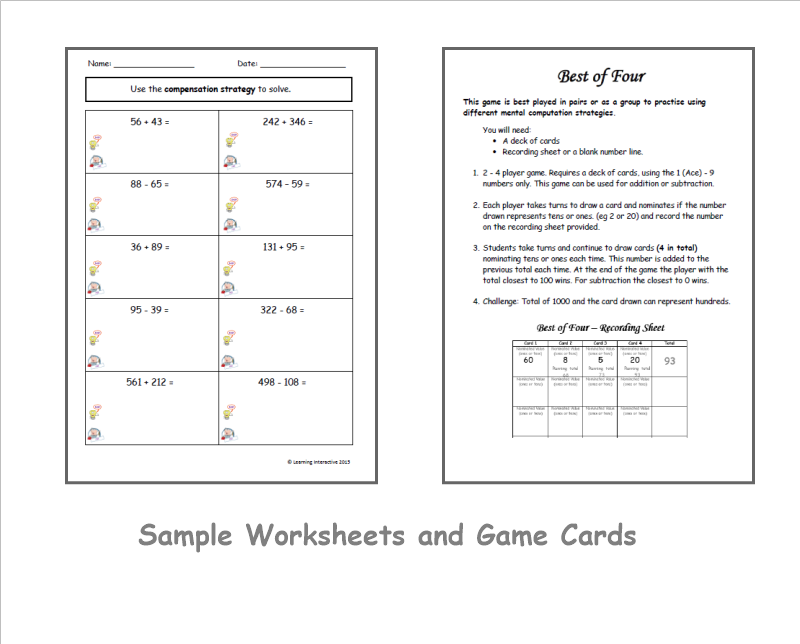
Mathematics Compensation strategy for addition and subtraction Year 3+4 Learning Interactive
A compensation strategy helps to redefine and simplify an addition, subtraction, multiplication, or division problem. It also makes mental computation easier. Let's consider an example. You have $ 36, of which you spent $ 17. How much money do you have left with you? You will need to subtract 17 from 36 to find out! We know that 17 + 3 = 20.

How to Use the Compensation Strategy for Addition Two Boys and a Dad
Compensation is a useful strategy for making sums easier to solve. Compensation strategy: One number is rounded to streamline the calculation. The answer is then modified to compensate for the original change. For example, 52 + 39; think of it as 52 + 40 = 92, then remove the 1 added at the beginning. so 52 + 39 = 91.

How to Use the Compensation Strategy for Addition Two Boys and a Dad
Compensation is a two-step process. In the problem above, a student is working to solve 29+46. They notice that 29 is close to a multiple of ten, so the first step is to add one to 29 to create a new problem: 30+46. This problem is much easier to solve!

How to Use the Compensation Strategy for Addition Two Boys and a Dad
With compensation, there is no one right way to perform the strategy. In this case, let's begin by taking 4 away from the 64 and add 132+60 to make 192. This is an easy equation to solve. Now, since we subtracted 4 from the original equation, we have to add 4 to the answer. 192+4=196. NEXT STEPS:

Mathematics Compensation strategy for addition and subtraction Year 3+4 Learning Interactive
Let's talk about compensation. This is a strategy where you manipulate numbers to create friendly numbers. These friendly numbers are easier to add. Example 1: 87 + 399 You take 1 from 87 and move it to 399 Now you have 86 + 400 86 + 400 = 486 You've now made a simpler problem to solve. WHY DOES THIS STRATEGY WORK?
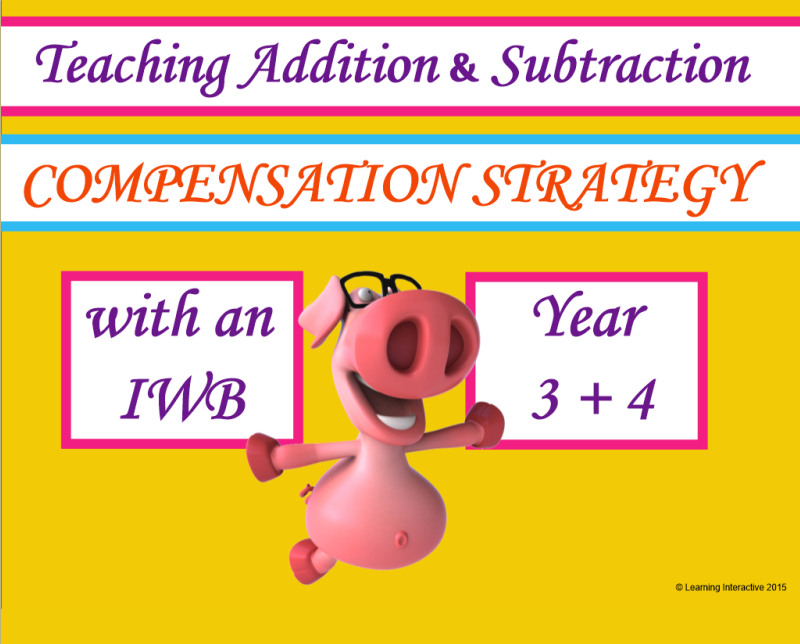
Mathematics Compensation strategy for addition and subtraction Year 3+4 Learning Interactive
Compensation Strategy: Subtraction In the previous blog post, we talked out how the compensation strategy can help students create simpler addition problems, you can view the blog post about it here. Today, let's look at how this strategy works in subtraction. Example 1: 800 - 254 You take 1 from 800 and get 799
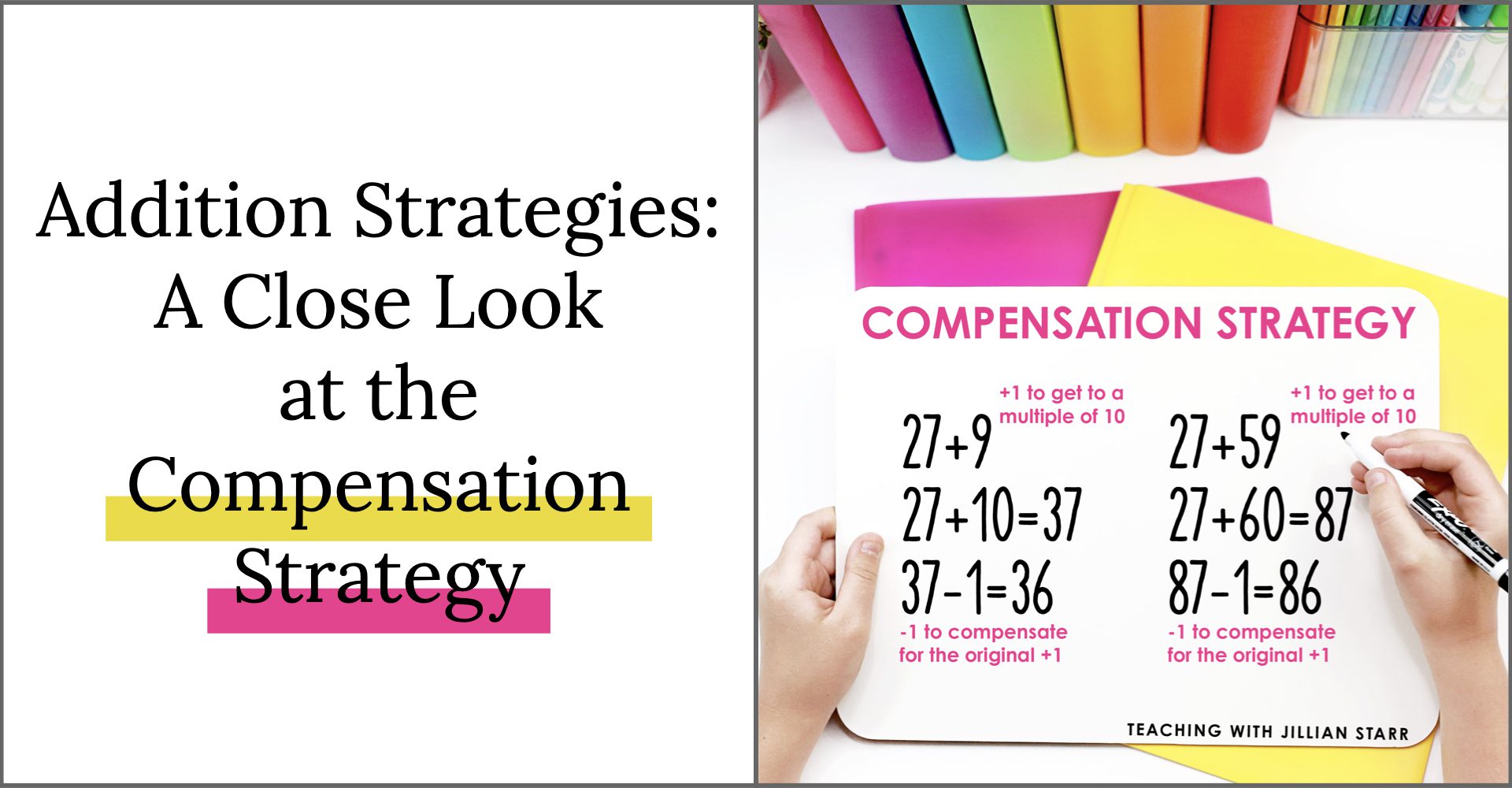
Top Addition Strategies The Compensation Strategy
https://www.mathswithmum.com Learn how to use the compensation strategy for addition with this video lesson!Visit https://www.mathswithmum.com/addition-co.
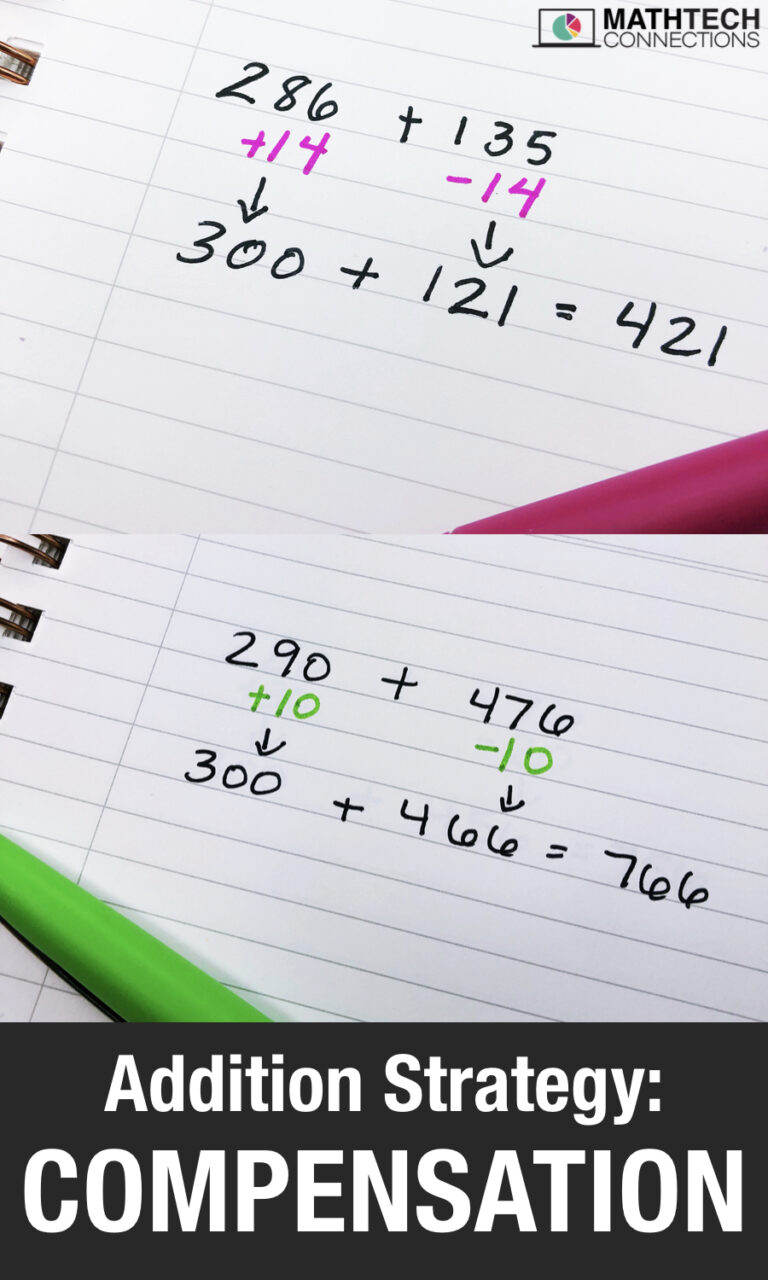
Addition Strategy Compensation Math Tech Connections
Compensation is a way of adding or taking away numbers that you find easier. You add or take away a bit too much or a bit too little, so then you have to add or take away this too. Example 26 - 9.

The Compensation Strategy For Subtraction Mental math strategies, Math methods, Math strategies
Learn How to Use the Compensation Strategy for Addition. Introducing the perfect teaching tool for your maths class - a printable mini-book that teaches students how to use the compensation strategy to solve addition problems. Inside the mini-book, you'll find a step-by-step guide that walks students through the process of using the.

Compensation Strategy from Askia Little Anchor charts Pinterest
Compensation is primarily an addition strategy where the aim is to to adjust one addend to become an easier number to add with. This involves moving the quantity required to do this from one addend to the other. In Operation Maths, these easier numbers are usually referred to as friendly or compatible numbers and can include doubles, multiples.

Compensation Strategy Subtraction 3 digits YouTube
These compensation strategy Maths worksheets are perfect for teaching your children this handy technique for addition and subtraction. Show more Related Searches adding 9 compensate strategy adding 11 compensation strategy addition friendly numbers compensation strategy Ratings & Reviews Curriculum Links Make a Request Resource Updates

Compensation Strategy Mental Math YouTube
The multiplication by compensation strategy is taught as a method for multiplying by numbers that are close to a multiple of 10, such as multiplying by 9. The method involves multiplying by a larger number that is a multiple of 10 and then subtracting amounts afterwards as necessary.
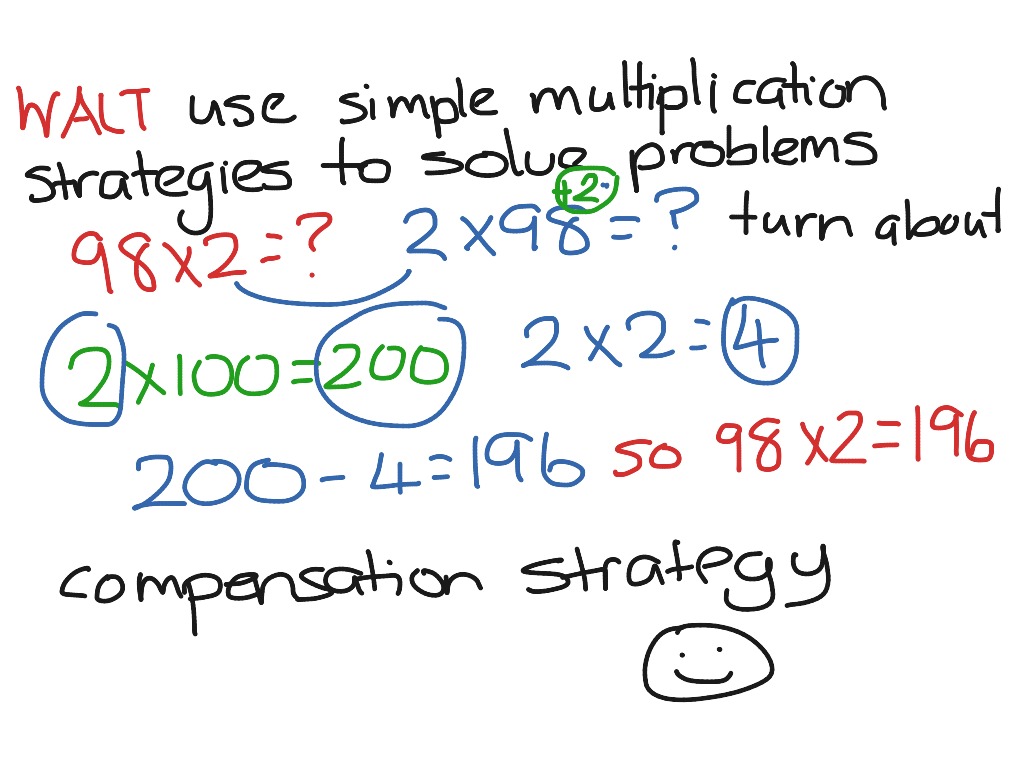
Compensation strategy for multiplication Math ShowMe
In Mathematics, compensation is a strategy in mental math in which you can change one addend to a multiple of 10 and then adjust the other addend to maintain the balance. For example, in 33 + 12 = ?, if you add 10 in 33, it will become 33 + 10 = 43. Now, you have to add 2 more to maintain balance as 10 is 2 less than 12. Accordingly, 43 + 2 = 45.

Math Strategy Compensation, SingleDigit Addition YouTube
math interested in self-paced, student- addition facts strategies at support with teaching addition strategies centered that strategy, please refer to this classroom? might be For more information you more post on my website: www.ShelleyGrayTeaching.com/compensation compensation on the 2-digit numbers and the second The first page involves